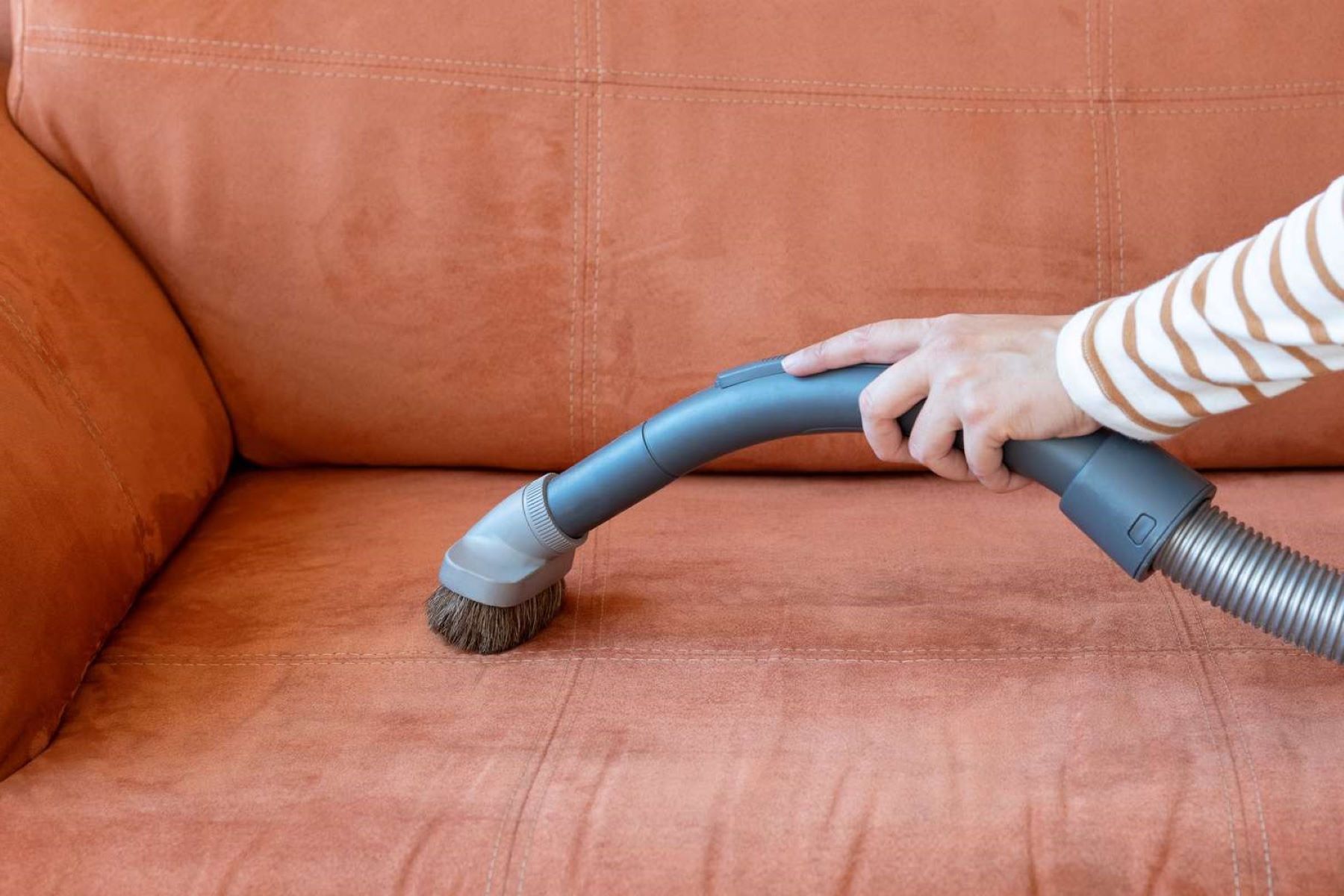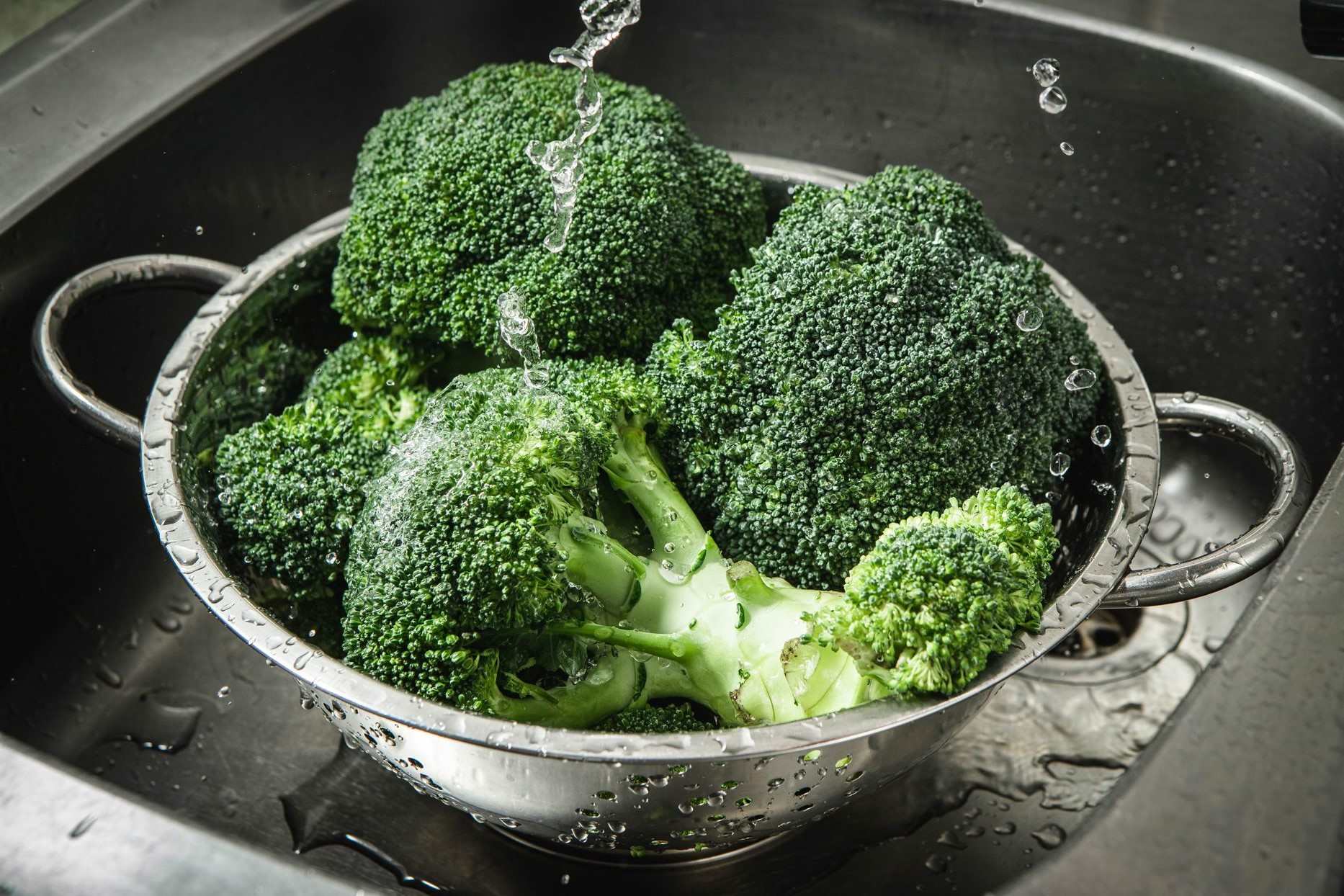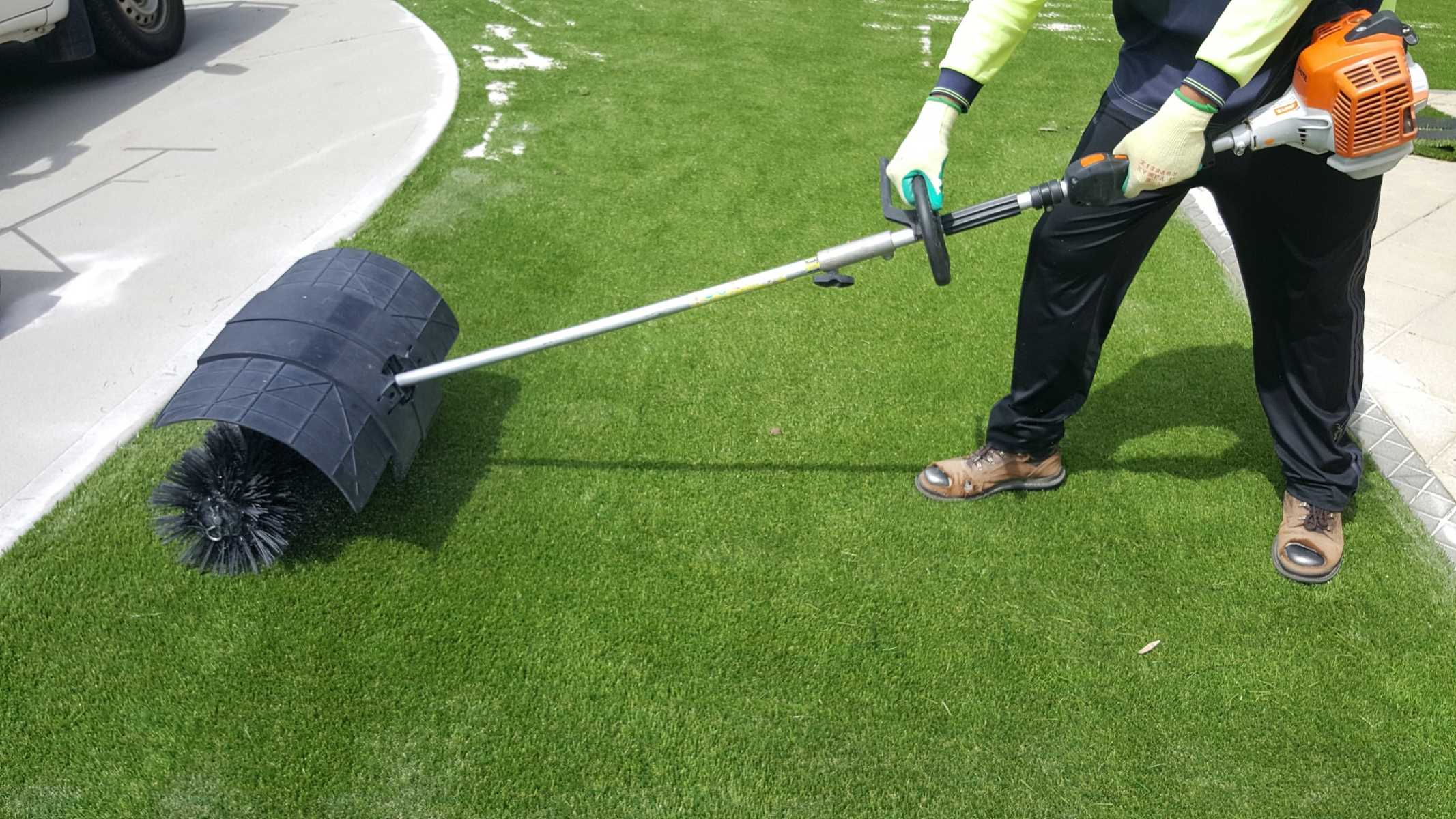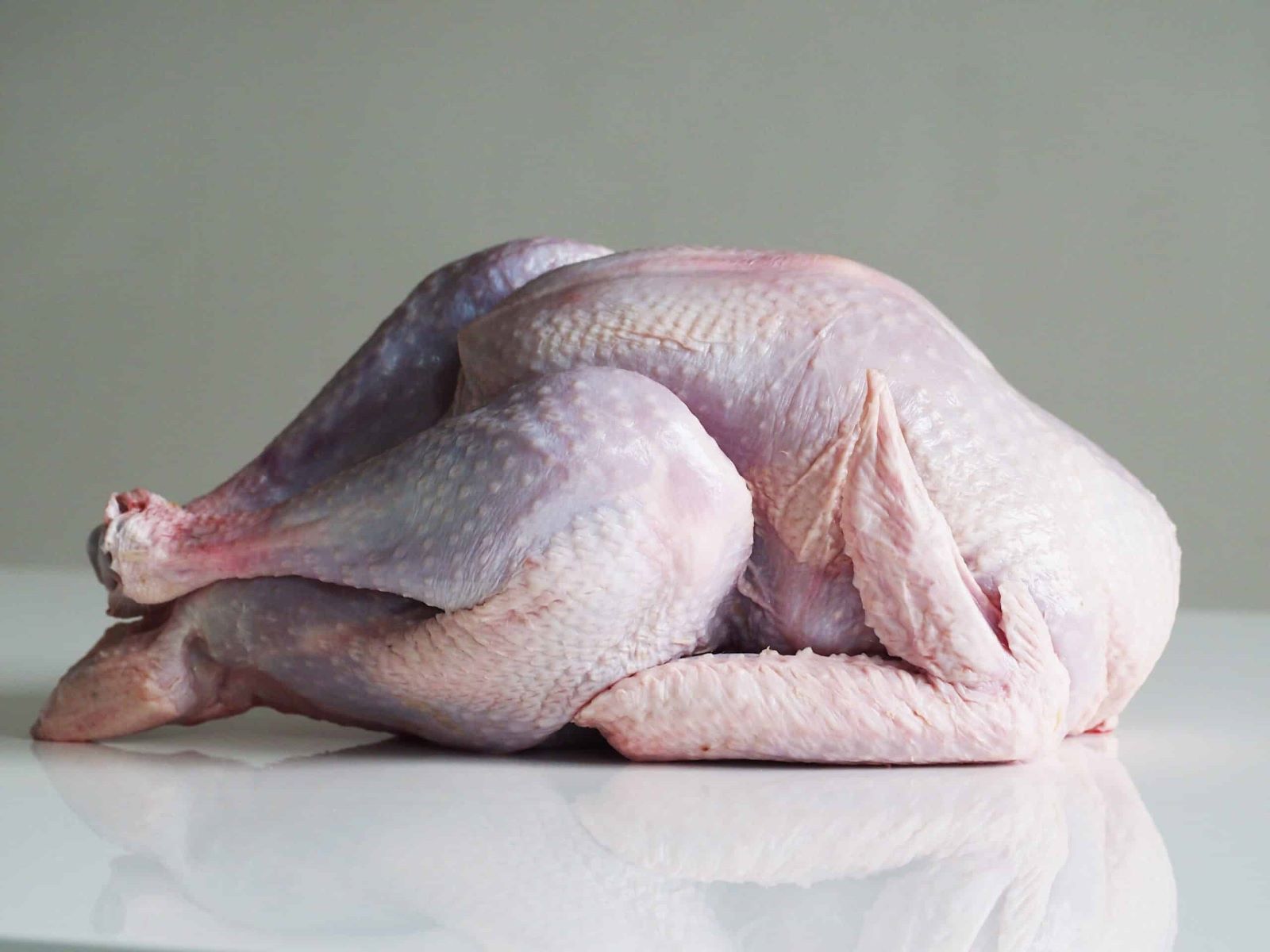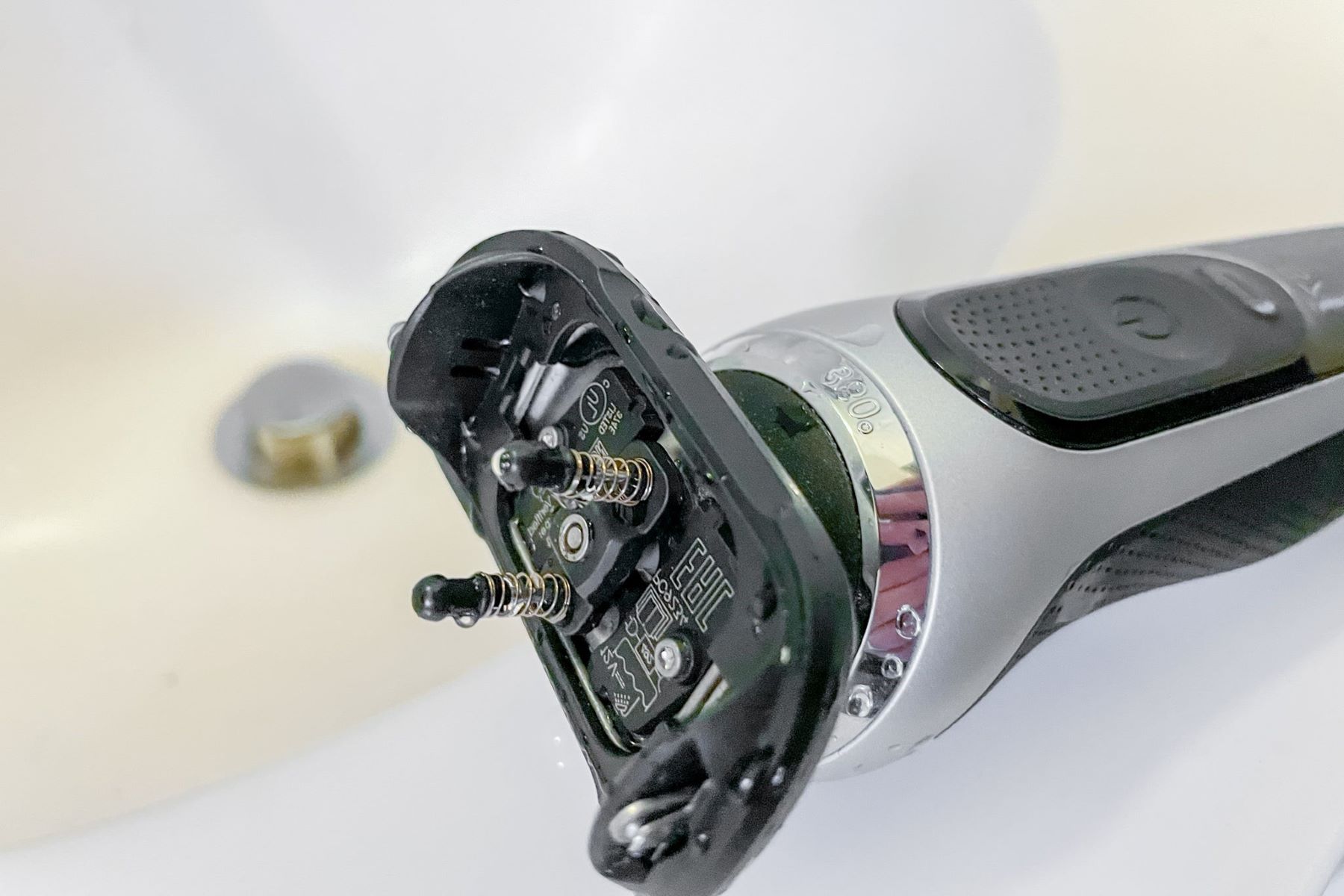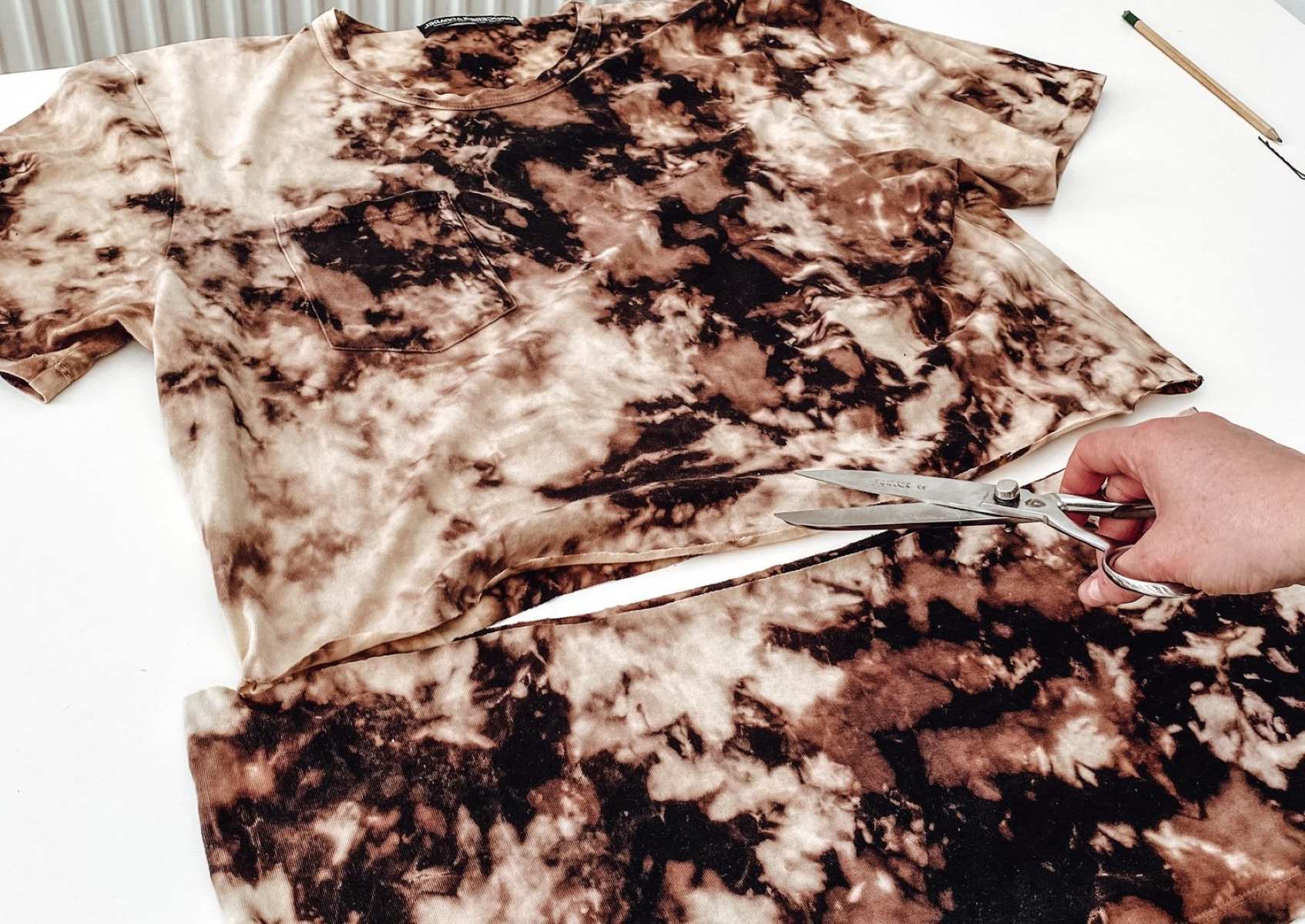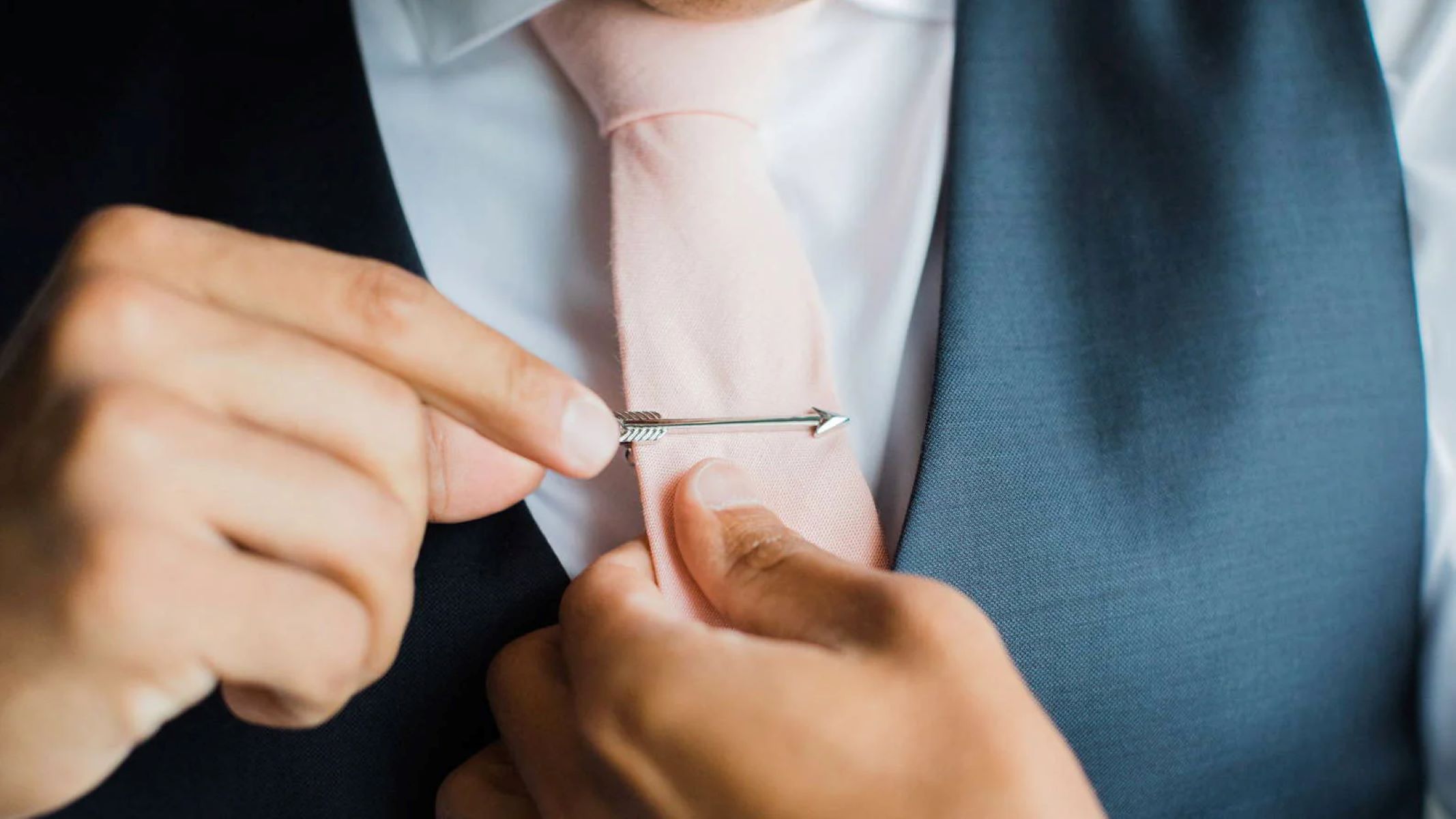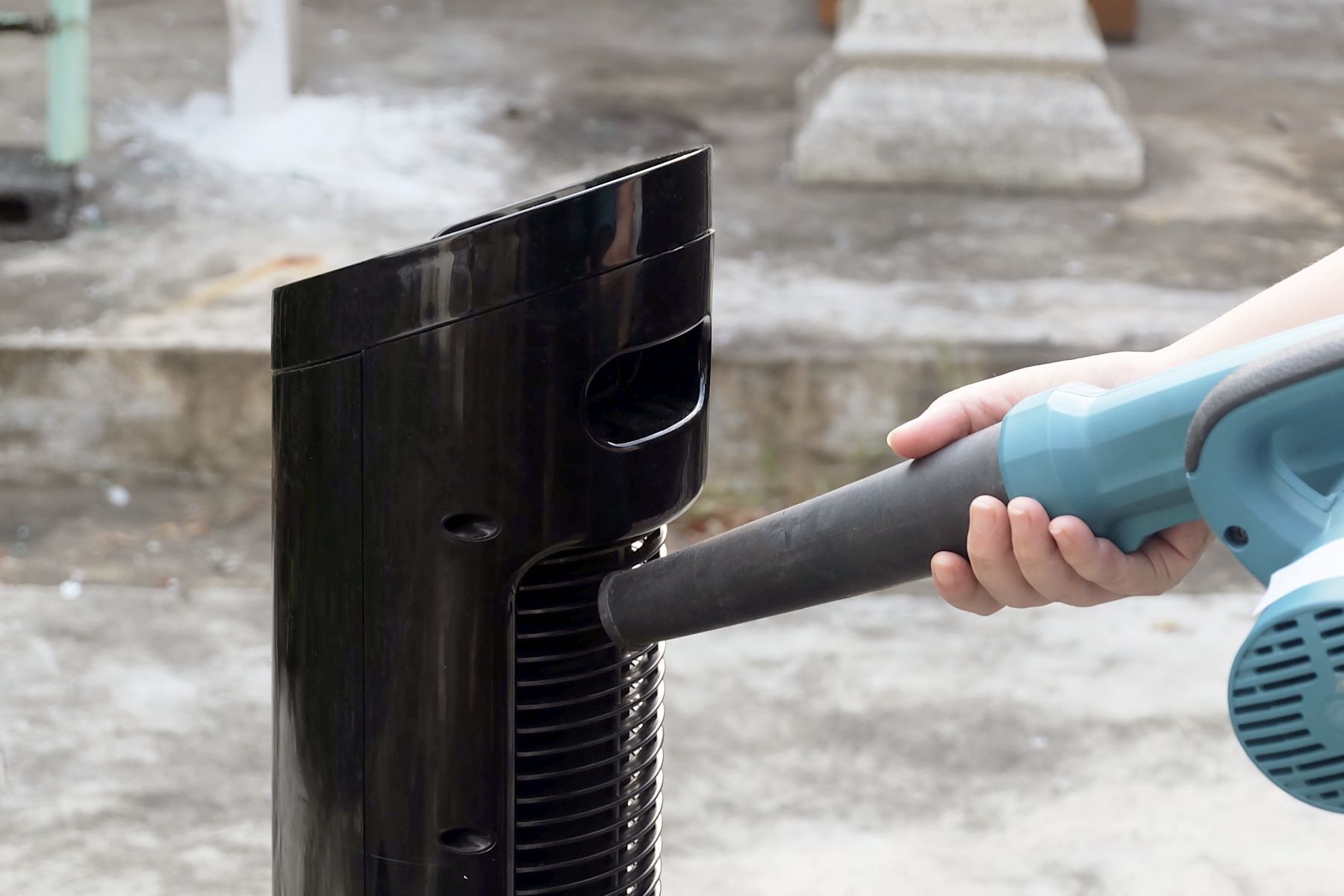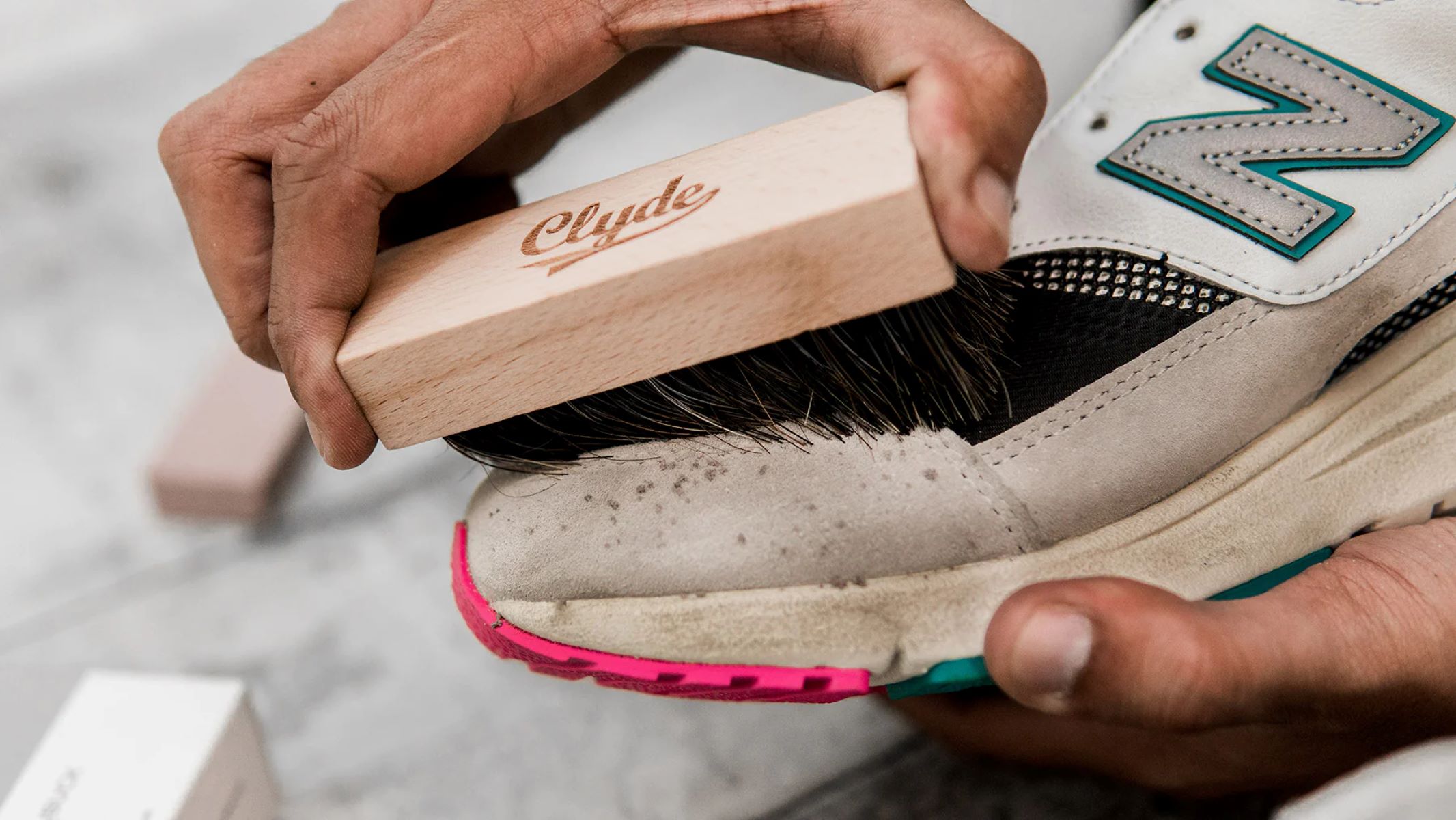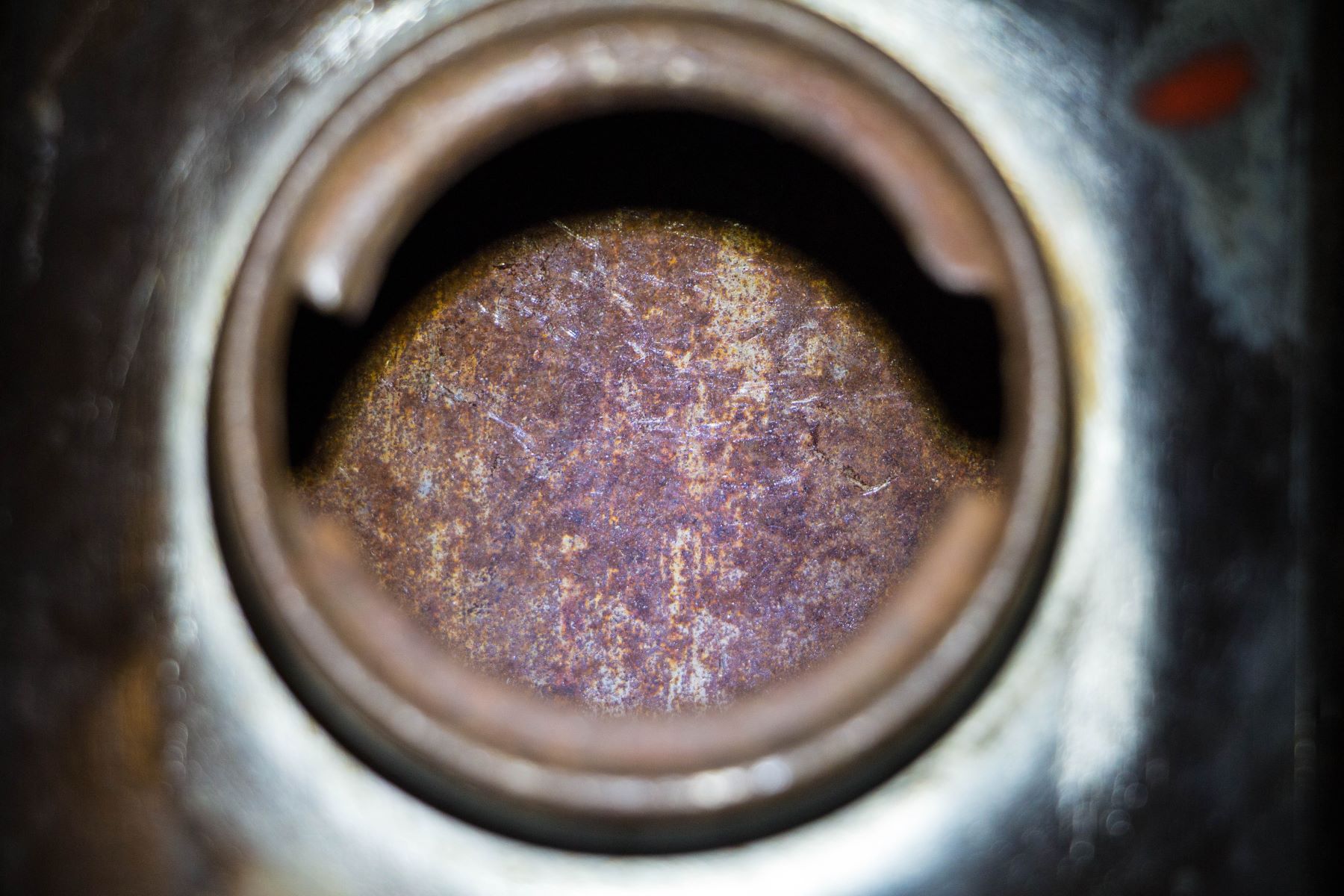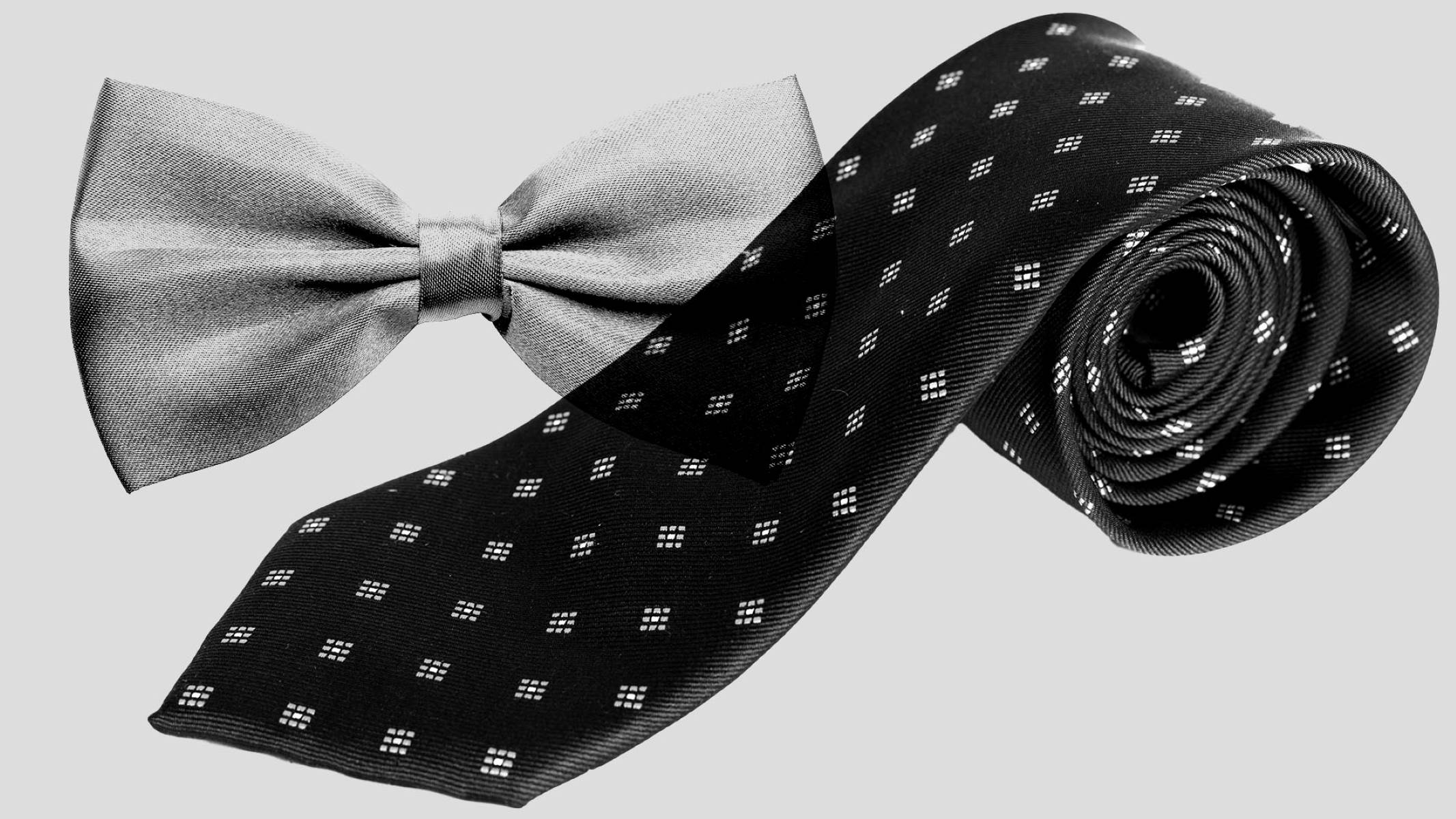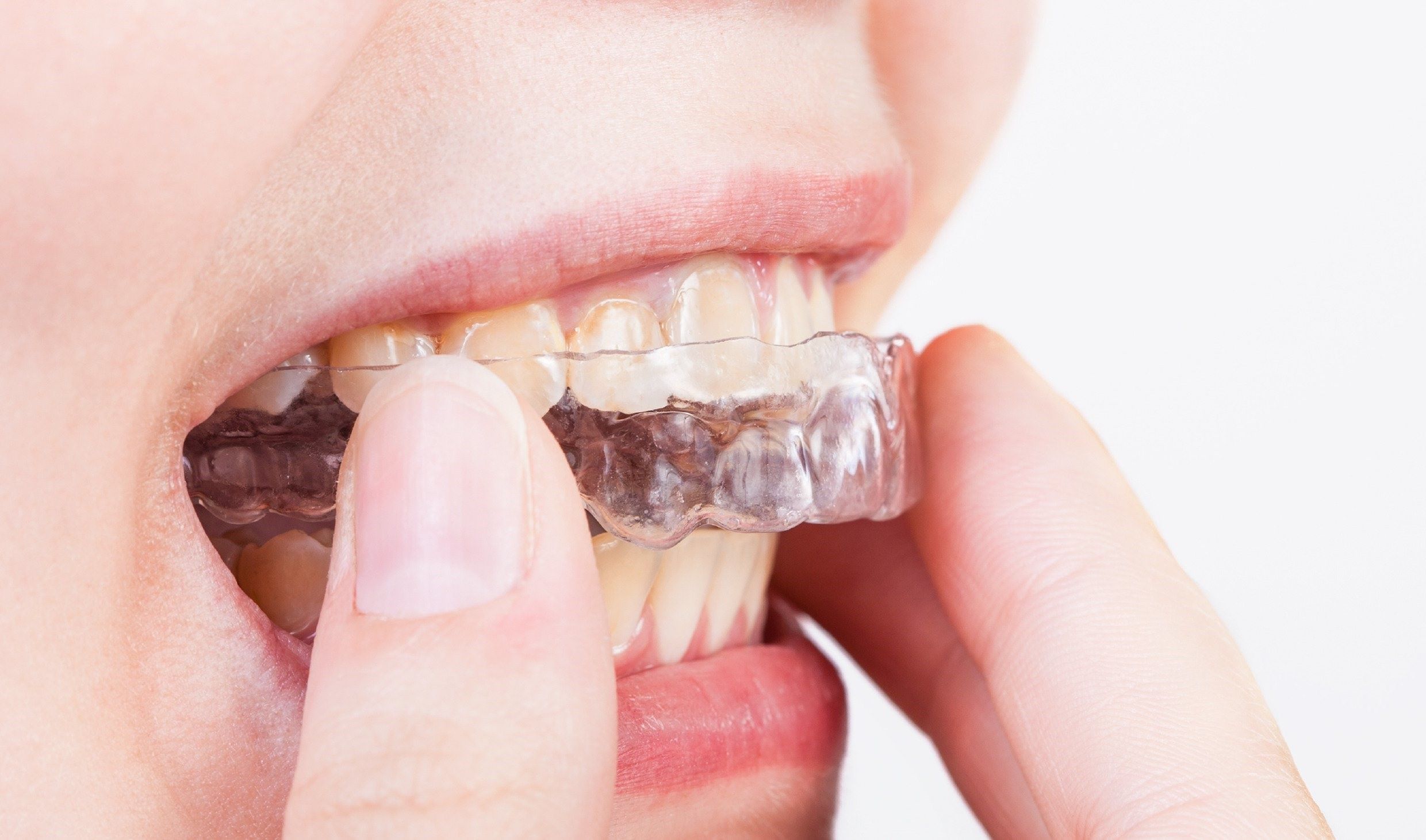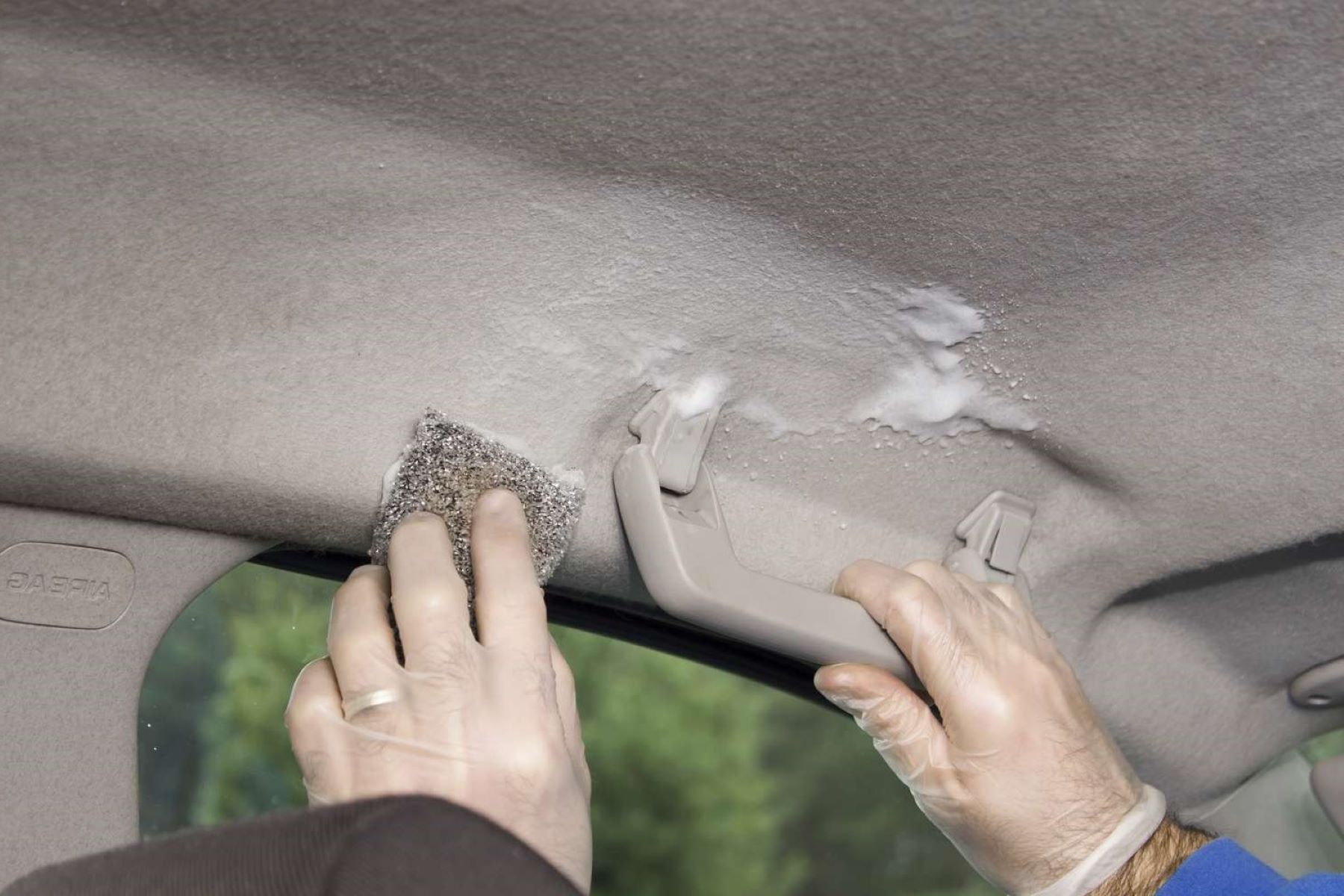Home>Home and Garden>How To Clean A Tie
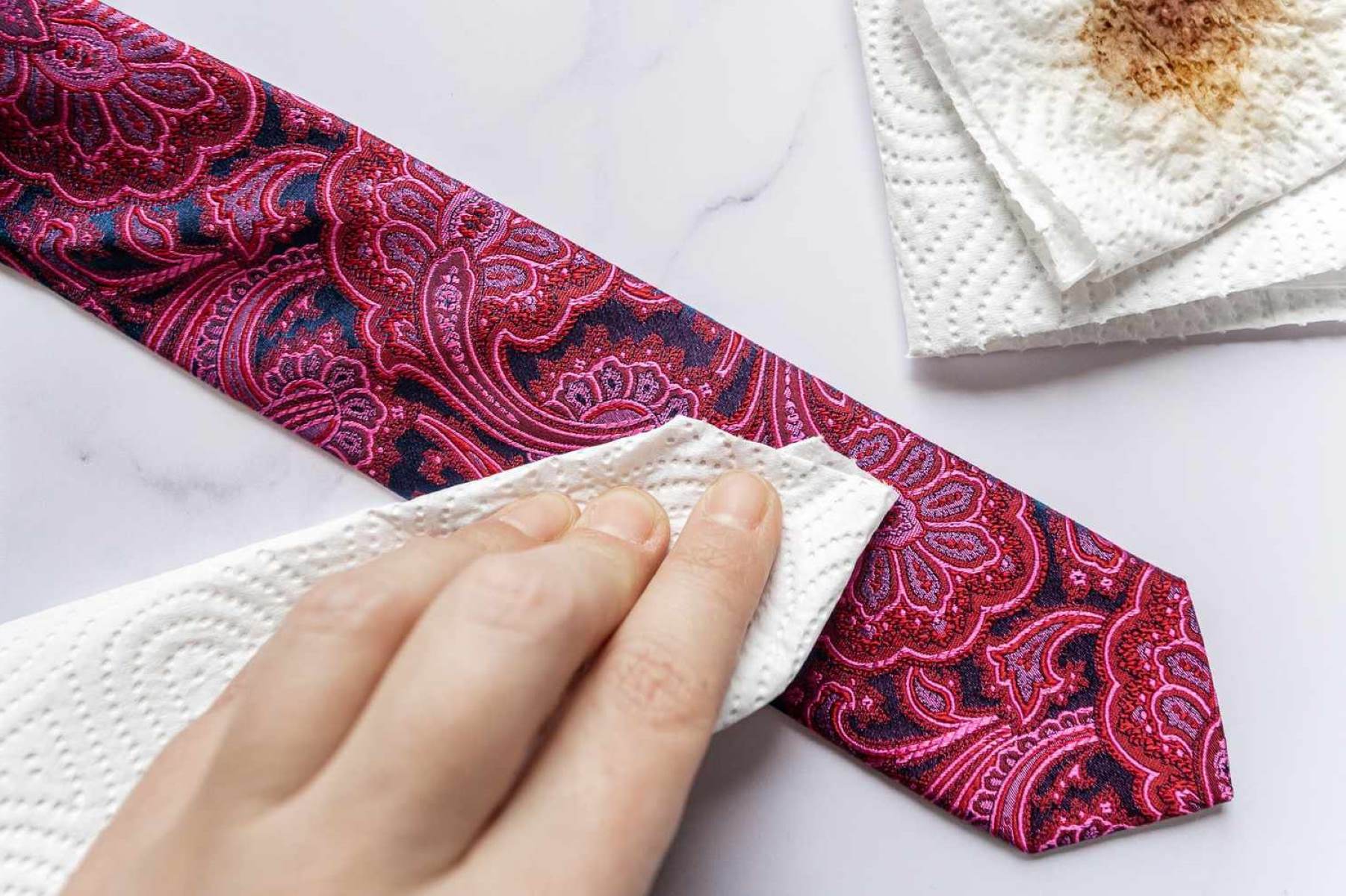

Home and Garden
How To Clean A Tie
Published: February 29, 2024
Learn the best methods for cleaning ties at home and keeping them looking fresh with our expert tips and tricks. Keep your ties looking sharp with our home and garden cleaning advice.
(Many of the links in this article redirect to a specific reviewed product. Your purchase of these products through affiliate links helps to generate commission for Regretless.com, at no extra cost. Learn more)
Table of Contents
Introduction
Cleaning a tie may seem like a daunting task, especially when considering the delicate nature of this essential accessory. Whether it's a cherished silk tie or a favorite patterned one, knowing how to properly clean and maintain it is crucial for preserving its quality and appearance. Over time, ties can accumulate stains, wrinkles, and odors, making it essential to have a reliable cleaning routine in place. By understanding the various methods and materials involved in tie cleaning, you can ensure that your ties remain in pristine condition for years to come.
Ties are not only a fashion statement but also a reflection of personal style and sophistication. They often hold sentimental value, whether they are passed down through generations or acquired for special occasions. As such, it's important to treat them with the care and attention they deserve. Whether you're dealing with a coffee spill, a stubborn stain, or simply want to freshen up your tie collection, knowing the proper cleaning techniques is essential.
In this comprehensive guide, we will explore the step-by-step process of cleaning a tie, covering everything from the necessary materials to the different cleaning methods. Whether you opt for spot cleaning, hand washing, or professional dry cleaning, each method has its own set of considerations and precautions. Additionally, we will delve into the intricacies of ironing and storing ties, ensuring that they maintain their crisp, polished appearance.
By the end of this guide, you will have a thorough understanding of how to clean and maintain your ties, allowing you to enjoy them for years to come. So, let's embark on this journey to discover the art of tie cleaning and preservation.
Read more: How To Tie A Lasso
Materials Needed
When it comes to cleaning a tie, having the right materials at your disposal is essential for achieving optimal results. Each cleaning method requires specific tools and products to ensure that the tie is treated with care and precision. Here's a comprehensive list of the materials you'll need to effectively clean and maintain your ties:
-
Mild Detergent: Opt for a gentle, mild detergent that is suitable for delicate fabrics such as silk or wool. Look for a detergent specifically formulated for hand washing or delicate garments to avoid damaging the tie's fibers.
-
White Vinegar: White vinegar is a versatile cleaning agent that can help tackle stubborn stains and odors. It's particularly effective for removing grease and oil-based stains from ties.
-
Clean, White Cloth: A clean, white cloth is essential for spot cleaning and applying cleaning solutions to the tie. Avoid using colored or patterned cloths, as they may transfer dye onto the tie.
-
Lint Roller: A lint roller is useful for removing surface debris, dust, and lint from the tie. This tool is particularly handy for quick touch-ups and maintenance between cleanings.
-
Absorbent Paper Towels: Having a supply of absorbent paper towels on hand is crucial for blotting and absorbing excess moisture or cleaning solutions during the cleaning process.
-
Iron and Ironing Board: For those opting to hand wash their ties, an iron and ironing board are essential for gently pressing and reshaping the tie after washing. Ensure that the iron is set to the appropriate temperature for the fabric of the tie.
-
Dry Cleaning Kit: If you choose to have your tie professionally dry cleaned, ensure that you have a reliable dry cleaning kit or access to a reputable dry cleaner in your area. This may include specialized cleaning solvents and a brush for spot cleaning.
-
Storage Accessories: Consider investing in tie racks, hangers, or storage cases to keep your ties organized and wrinkle-free between wearings. Proper storage can help maintain the tie's shape and prevent creasing.
By having these materials readily available, you'll be well-equipped to tackle any cleaning and maintenance needs for your tie collection. Each item serves a specific purpose in the cleaning process, ensuring that your ties receive the care and attention they require. With the right materials at your disposal, you can confidently proceed with the cleaning and maintenance of your ties, preserving their quality and appearance for years to come.
Preparing the Tie for Cleaning
Before diving into the actual cleaning process, it's crucial to prepare the tie to ensure that the cleaning efforts yield the best possible results. Preparing the tie for cleaning involves assessing the fabric, identifying stains, and taking necessary precautions to safeguard the tie's integrity during the cleaning process.
The first step in preparing the tie for cleaning is to carefully inspect the fabric for any visible stains, spots, or areas of discoloration. Take note of the type of fabric the tie is made of, as this will determine the appropriate cleaning method to use. Common tie fabrics include silk, wool, polyester, and microfiber, each requiring specific care to maintain their quality.
Next, gently use a lint roller or a clean, white cloth to remove any surface debris, dust, or lint from the tie. This initial step helps ensure that the tie is free from any loose particles that could interfere with the cleaning process. It's important to handle the tie with care and avoid applying excessive pressure, especially when dealing with delicate fabrics such as silk.
For ties with visible stains or spots, it's advisable to address these areas before proceeding with the overall cleaning process. Depending on the nature of the stain, consider using a small amount of mild detergent or white vinegar on a clean, white cloth to gently dab at the affected area. Always perform a spot test on a discreet part of the tie to ensure that the cleaning solution does not cause discoloration or damage to the fabric.
In the case of oil-based stains, applying a small amount of talcum powder or cornstarch to the affected area can help absorb the oil before further cleaning. Allow the powder to sit on the stain for a few hours to maximize absorption before gently brushing it off with a soft-bristled brush.
Once any visible stains have been addressed, it's essential to take precautions to protect the tie's delicate fabric during the cleaning process. For hand washing, carefully roll the tie into a clean, white towel to gently press out excess moisture without wringing or twisting the fabric. This helps prevent stretching or distortion of the tie's shape, particularly for silk ties that are more susceptible to damage from excessive manipulation.
By meticulously preparing the tie for cleaning, you set the stage for a successful cleaning process while minimizing the risk of damaging the fabric. This thoughtful approach ensures that the tie receives the care and attention it deserves, setting the foundation for effective cleaning and maintenance.
This comprehensive preparation not only safeguards the tie's fabric but also sets the stage for a successful cleaning process, ensuring that the tie is ready to undergo the chosen cleaning method without compromising its quality or appearance.
Spot Cleaning
Spot cleaning is a targeted approach to addressing specific stains or blemishes on a tie without subjecting the entire fabric to a comprehensive cleaning process. This method is particularly useful for handling localized stains promptly, preventing them from setting and becoming more challenging to remove over time. Whether it's a small food stain from a recent dinner party or a splash of coffee from a busy morning, spot cleaning allows for precise treatment of affected areas, preserving the overall appearance of the tie.
To initiate spot cleaning, it's essential to identify the nature of the stain and the fabric of the tie. Different stains may require specific cleaning solutions and techniques for effective removal. For instance, water-based stains, such as those from beverages or watercolor, can often be addressed with a mild detergent solution. On the other hand, oil-based stains, including grease or salad dressing, may necessitate the use of white vinegar to break down the oils effectively.
Once the stain and fabric considerations are made, begin by preparing a small amount of the appropriate cleaning solution. For water-based stains, dilute a mild detergent in water, ensuring that it is well mixed. For oil-based stains, a solution of white vinegar and water can be prepared, with a higher concentration of vinegar for more stubborn stains.
Using a clean, white cloth, gently dab the affected area with the prepared cleaning solution. It's crucial to avoid rubbing or applying excessive pressure, as this can spread the stain and potentially damage the fabric. Instead, use a blotting motion to lift the stain from the tie, periodically switching to a clean section of the cloth to prevent re-deposition of the stain.
After applying the cleaning solution, use a separate clean, damp cloth to blot the area and remove any residual cleaning solution. This helps prevent the tie from becoming saturated with moisture, which can lead to water spots or discoloration. Once the spot cleaning process is complete, allow the tie to air dry naturally, avoiding direct heat or sunlight, which can cause the fabric to fade or become distorted.
By promptly addressing stains through spot cleaning, you can effectively maintain the pristine appearance of your ties, ensuring that they remain in top condition for any occasion. This targeted approach not only preserves the overall quality of the tie but also minimizes the need for more extensive cleaning, prolonging the lifespan of this essential accessory.
Hand Washing
Hand washing is a meticulous yet effective method for cleaning ties, particularly those made from delicate fabrics such as silk or wool. This approach allows for gentle yet thorough cleaning, ensuring that the tie retains its shape, texture, and color vibrancy. Before embarking on the hand washing process, it's essential to consider the fabric care label on the tie to determine its suitability for hand washing. Additionally, it's advisable to spot test a small, inconspicuous area of the tie to ensure that the cleaning process does not cause any adverse effects.
To commence the hand washing process, fill a clean basin or sink with lukewarm water. It's crucial to avoid hot water, as it can cause the tie's colors to bleed or the fabric to shrink. Add a small amount of mild detergent to the water and gently swirl it to create a diluted cleaning solution. Submerge the tie in the water, gently agitating it to ensure that the cleaning solution permeates the fabric.
Allow the tie to soak for a brief period, typically no more than a few minutes, to loosen any embedded dirt or stains. Avoid prolonged soaking, as this can weaken the fabric and affect the tie's overall integrity. After the soaking period, carefully knead the tie with your fingertips, paying particular attention to any areas with visible stains or discoloration.
Once the tie has been gently kneaded and cleansed, drain the soapy water from the basin and refill it with clean, lukewarm water. Submerge the tie in the fresh water and gently agitate it to rinse away the detergent thoroughly. Repeat this rinsing process as necessary until the water runs clear, indicating the removal of all traces of detergent from the tie.
After the final rinse, carefully roll the tie into a clean, white towel to blot out excess moisture. Avoid wringing or twisting the tie, as this can distort its shape and texture. Once excess moisture has been removed, lay the tie flat on a dry towel and gently reshape it to its original form. Allow the tie to air dry naturally, avoiding direct sunlight or heat sources, which can cause the fabric to become discolored or distorted.
By following these meticulous steps, hand washing can effectively cleanse ties, ensuring that they maintain their pristine appearance and quality. This method is particularly beneficial for delicate ties, offering a gentle yet thorough cleaning process that preserves the tie's integrity and elegance.
Read more: How To Clean Diva Cup
Dry Cleaning
Dry cleaning is a professional and effective method for cleaning ties, especially those made from delicate fabrics such as silk, wool, or cashmere. This specialized process involves using solvent-based solutions to remove stains and dirt from the tie without subjecting it to the water and agitation involved in traditional washing methods. Dry cleaning is particularly beneficial for ties with intricate patterns, delicate textures, or those labeled as dry clean only.
To initiate the dry cleaning process, it's essential to either utilize a reputable dry cleaning service or invest in a high-quality home dry cleaning kit. If opting for professional dry cleaning, it's advisable to choose a dry cleaner with experience in handling delicate garments and accessories. Ensure that the dry cleaner is well-versed in treating ties and understands the specific requirements for different fabrics and patterns.
For those choosing to use a home dry cleaning kit, carefully follow the manufacturer's instructions to ensure the safe and effective cleaning of the tie. These kits typically include specialized cleaning solvents and a brush for spot cleaning, allowing for targeted treatment of stains and soiled areas. It's important to exercise caution and precision when using these solvents, ensuring that they are applied sparingly and in accordance with the provided guidelines.
When using a home dry cleaning kit, begin by identifying any visible stains or spots on the tie that require attention. Gently apply the cleaning solvent to the affected areas using the provided brush, taking care to avoid excessive saturation of the fabric. Allow the solvent to penetrate the stain, effectively lifting and dissolving it from the tie's surface.
After spot cleaning, allow the tie to air out and dry thoroughly before assessing the results. It's essential to ensure that the tie is completely dry before wearing or storing it to prevent any residual solvent from transferring onto clothing or causing discoloration. Additionally, consider using a fabric freshener or deodorizing spray designed for delicate fabrics to impart a fresh, clean scent to the tie.
By choosing the dry cleaning method, you can effectively address stains and soiling on ties while preserving their delicate fabrics and intricate designs. This professional approach ensures that ties receive thorough cleaning without compromising their structural integrity or aesthetic appeal. Whether opting for professional dry cleaning services or utilizing a home dry cleaning kit, this method offers a reliable solution for maintaining the pristine condition of your ties.
Ironing and Storing
After the cleaning process, proper ironing and storage techniques are essential for maintaining the impeccable appearance and structural integrity of ties. Ironing, when done correctly, helps to eliminate wrinkles and creases, ensuring that the tie retains a polished and professional look. Storing ties appropriately prevents them from becoming misshapen or damaged, preserving their quality for future wear.
Ironing
When ironing a tie, it's crucial to use a low to medium heat setting on the iron to prevent damage to the delicate fabric. Begin by laying the tie flat on the ironing board, taking care to smooth out any wrinkles or folds. Place a clean, white cloth over the tie to act as a protective barrier between the iron and the fabric. Gently press the iron over the cloth-covered tie, using smooth and even strokes to remove wrinkles without applying excessive pressure.
Avoid leaving the iron in one spot for too long, as this can cause the fabric to become discolored or distorted. Pay particular attention to the tie's edges and narrow end, ensuring that they are carefully pressed to maintain a uniform appearance. After ironing, allow the tie to cool and set for a few minutes before wearing or storing it. This gentle yet effective ironing process helps to restore the tie's smooth and refined look, ensuring that it is ready for any occasion.
Storing
Proper storage is essential for preserving the shape and quality of ties between wearings. Consider investing in a tie rack or hanger specifically designed for organizing and storing ties. These accessories allow ties to be hung neatly, preventing them from becoming wrinkled or creased while ensuring easy access when selecting a tie for an outfit.
Alternatively, a dedicated tie storage case or organizer can be used to keep ties neatly folded and protected. When storing ties in a case, it's important to avoid overcrowding, as this can lead to creasing and distortion. Ensure that each tie has ample space and is laid flat to maintain its shape and appearance.
To further safeguard ties from dust and potential damage, consider storing them in a clean, dry environment away from direct sunlight and moisture. This helps to prevent fading, discoloration, and mildew, ensuring that ties remain in optimal condition for extended periods.
By incorporating these ironing and storing practices into your tie maintenance routine, you can effectively prolong the lifespan and pristine appearance of your ties. These simple yet impactful steps contribute to the overall care and preservation of ties, allowing you to enjoy them for years to come.
Read more: How To Tie Friendship Bracelets
Conclusion
In conclusion, mastering the art of tie cleaning and maintenance is essential for preserving the elegance and longevity of this timeless accessory. By understanding the diverse cleaning methods, from spot cleaning to hand washing and professional dry cleaning, individuals can ensure that their ties remain in impeccable condition for any occasion. The meticulous preparation of ties before cleaning, including fabric assessment and stain treatment, sets the stage for successful cleaning outcomes while safeguarding the tie's delicate fibers.
Spot cleaning offers a targeted approach to addressing specific stains promptly, preventing them from setting and becoming more challenging to remove over time. This method not only preserves the overall quality of the tie but also minimizes the need for more extensive cleaning, prolonging the lifespan of this essential accessory.
Hand washing, while meticulous, provides a gentle yet effective means of cleansing ties, particularly those made from delicate fabrics such as silk or wool. This approach ensures that the tie retains its shape, texture, and color vibrancy, maintaining its elegance and sophistication.
For ties made from delicate fabrics or those labeled as dry clean only, professional dry cleaning offers a reliable solution for thorough cleaning without compromising the tie's structural integrity or aesthetic appeal. This method effectively addresses stains and soiling on ties, preserving their delicate fabrics and intricate designs.
Furthermore, the proper ironing and storage of ties are crucial for maintaining their impeccable appearance and structural integrity. By following these practices, individuals can ensure that their ties are always ready for wear, exuding sophistication and style.
In essence, the comprehensive understanding and application of tie cleaning and maintenance techniques are instrumental in preserving the quality, appearance, and sentimental value of ties. By incorporating these practices into their routine, individuals can enjoy their ties for years to come, making a lasting impression with each wear.
